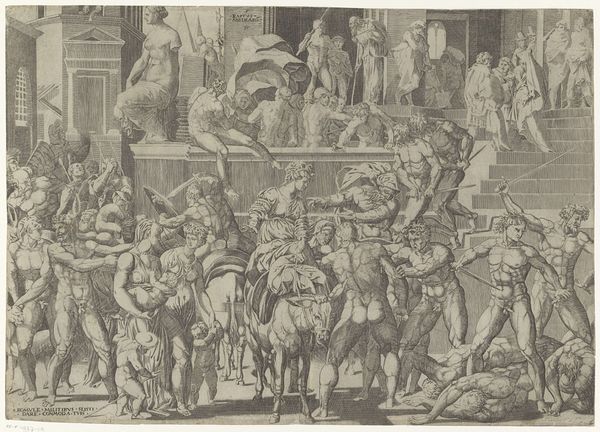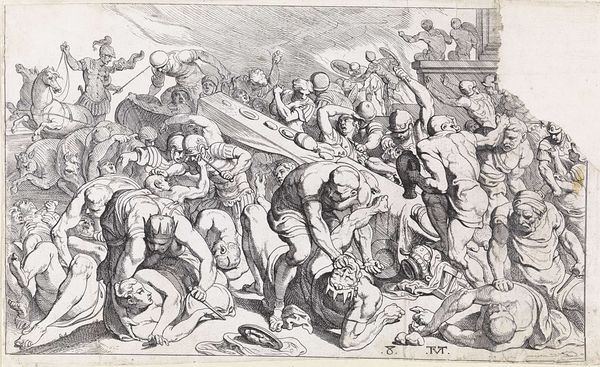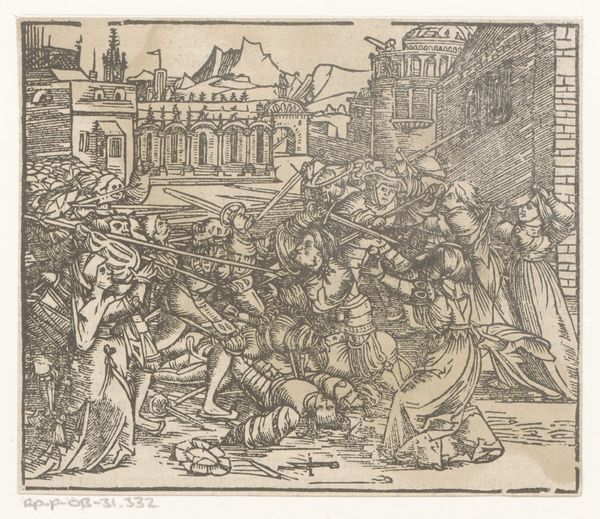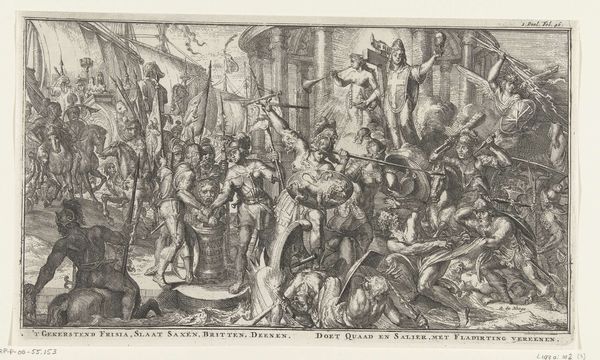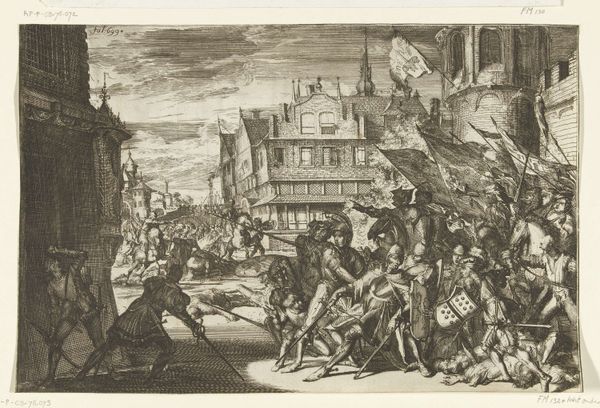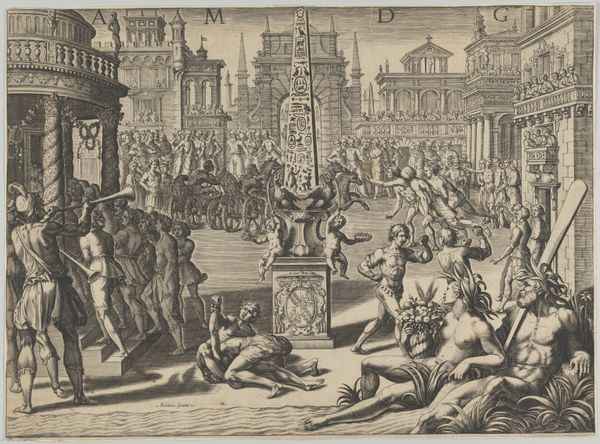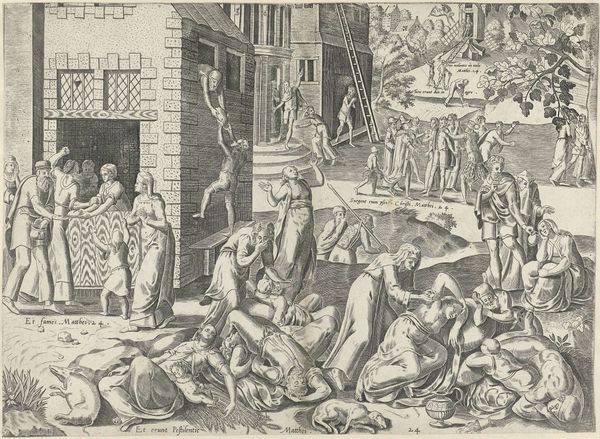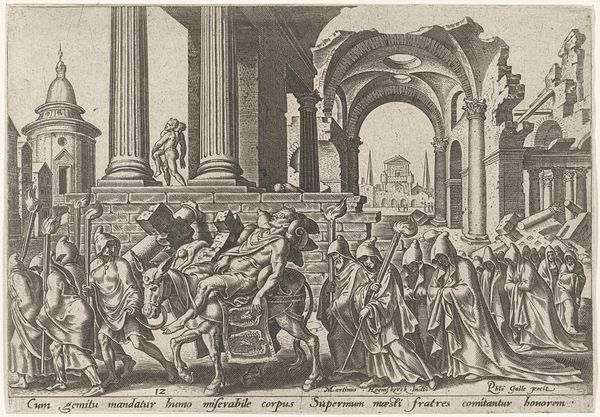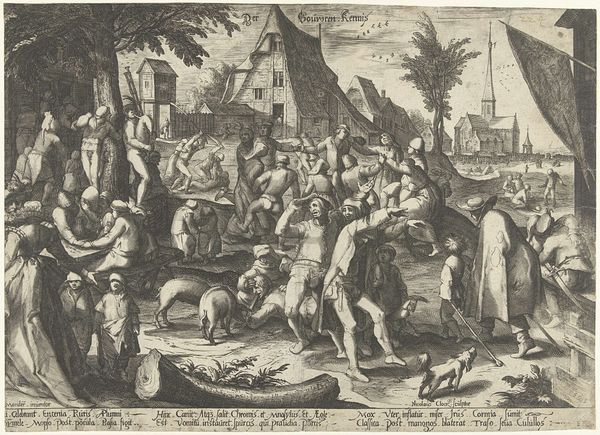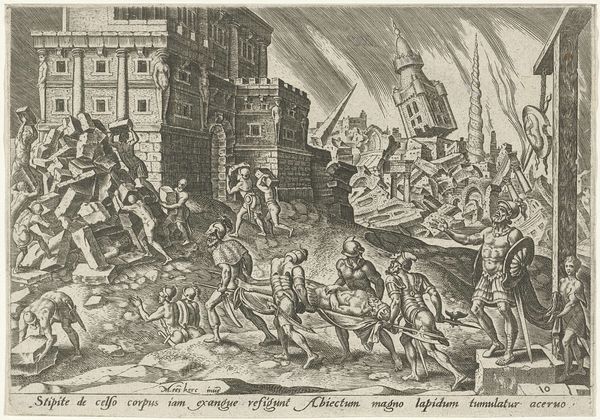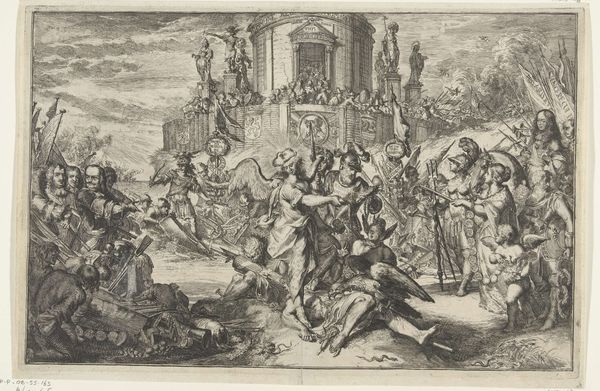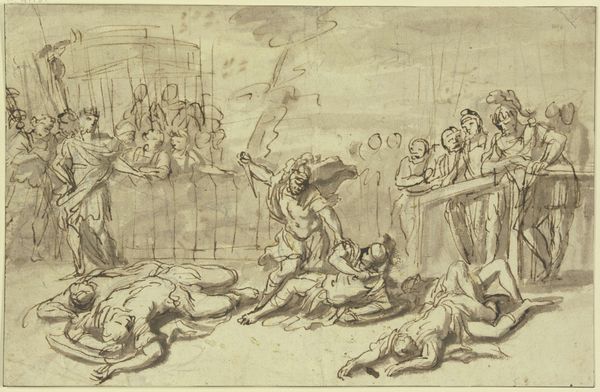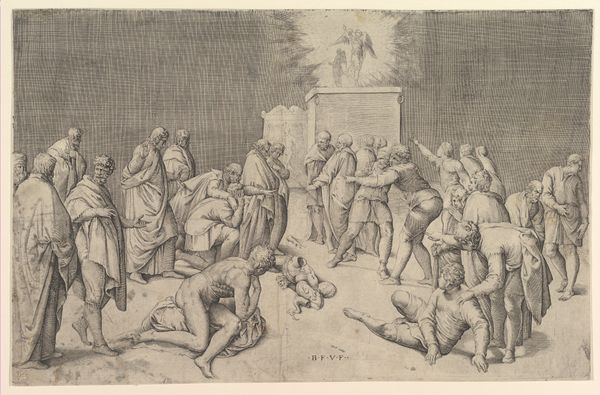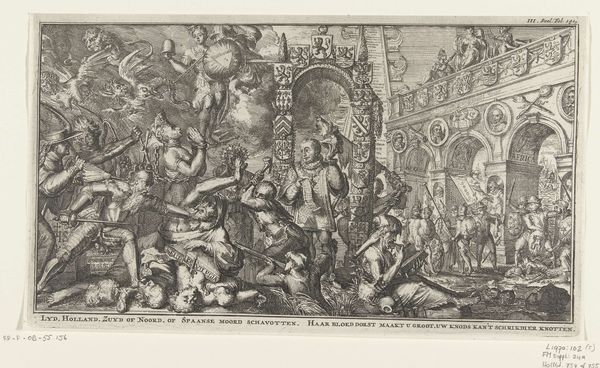
print, etching, engraving
#
narrative-art
# print
#
etching
#
figuration
#
11_renaissance
#
history-painting
#
northern-renaissance
#
engraving
Dimensions: width 588 mm, height 419 mm
Copyright: Rijks Museum: Open Domain
Editor: Here we have Dirck Volckertsz Coornhert's "Kindermoord te Betlehem" or "Massacre of the Innocents," created in 1551. It's a rather intense print. The figures are packed together, creating a chaotic composition that mirrors the horror of the biblical event. What strikes you most about this piece? Curator: Note how the artist deploys linear perspective, yet the receding architectural elements become a stage for amplified horror rather than spatial logic. The engraving's tonal range, predominantly stark contrasts, directs our eye. The figures, rendered with meticulous musculature, participate in a brutal ballet of action and reaction. Are we invited to assess anatomical rendering or narrative intent? Editor: So, is the emphasis on the skill of depicting bodies rather than on the emotional impact of the massacre? Curator: Not exclusively, but consider the Mannerist tendencies. Observe the stylized poses, the contortions—aren't these designed to showcase virtuosity in representing the human form under extreme duress? And observe the balanced asymmetry achieved through two architectual objects. The eye dances from one death scene to another. Editor: I see what you mean. The details are incredibly precise, almost detached, in a way that's unsettling given the subject matter. It’s less about feeling and more about witnessing a carefully constructed scene. Curator: Precisely. Note also how Coornhert masterfully uses light and shadow to articulate forms. Ask yourself, does this emphasize or detract from the underlying horror of the event being depicted? Editor: That’s a great point. By drawing attention to the technique, the artist forces you to consider his role in portraying such a difficult subject. Curator: Indeed. The very act of creating such a complex composition, full of visual rhymes and oppositions, asks us to analyse rather than simply empathize. Editor: I hadn't considered that before. It makes me see the print as a demonstration of skill and structure above all else. Curator: That's an essential element of interpreting its form and message, and perhaps the intention of the artist in presenting this tragic tableau.
Comments
No comments
Be the first to comment and join the conversation on the ultimate creative platform.
